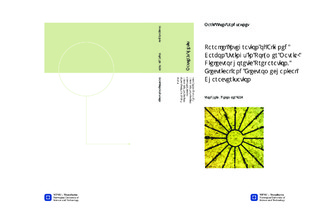| dc.description.abstract | Carbon black particles have been aligned into string-like assemblies by dielectrophoresis. Particles were dispersed in Dymax Ultra Light-Weld 3094 oligomermixture, with 0.1 vol.% filler content. This mixture was spread over three differentelectrode configurations made on glass and silicon substrate by photolithography.Alignment was first tested on the see-through and rigid glass substrate for bettervisualisation, and then performed on the bendable silicon substrate. The siliconsubstrate was covered by an insulating silicon oxide layer to separate the electrodesfrom the conducting silicon.The first configuration consisted of tip-like electrode pairs, with the electrodetips pointing towards each other, with a distance of 30 or 100 µm. The othertwo electrode configurations consisted of the same tip-like electrode pairs arrangedin two-dimensional matrix and radial patterns, with 8 and 15 pairs, respectively.Electric field alignment of carbon black particles was carried out with an alternatingelectric field with 3-9 kV/cm, followed by photopolymerisation (UV curing) of thematrix, which locks the aligned strings in place.Alignment was obtained for all electrode patterns, and the most successfulalignment was obtained with the radial 2D configuration of electrode pairs on rigidglass substrate. The alignment procedure was applied to seven samples with 15electrode pairs on each sample, and three of these samples resulted in 15 conductingcarbon black strings out of 15 possible. The electrical properties were studied interms of dc measurements and ac-impedance spectroscopy for each string. Theresistance of strings varied from 120 k-ohm to 5 M-ohm for the conducting strings, witha mean of 1.03 M-ohm.Alignment on the bendable silicon substrate was influenced by capacitive effects and modication of the electric field between the electrode tips, due to theconducting silicon layer. Carbon black strings were formed in the electrode gaps,but the resistance was signicantly higher than for the strings on glass substrate.Electromechanical properties were studied by bending the substrate, and changesin properties were observed as a result of straining the carbon black strings. Areduction of 80-90% of the current through the aligned strings was obtained witha deflection of 35 µm. This means that by optimising the alignment procedureso that strings with lower resistance would be obtained on silicon substrate, thechange in resistance could be measured as a function of deflection, and the alignedstrings on the 2D electrode pattern could potentially work as a strain sensor. | nb_NO |

